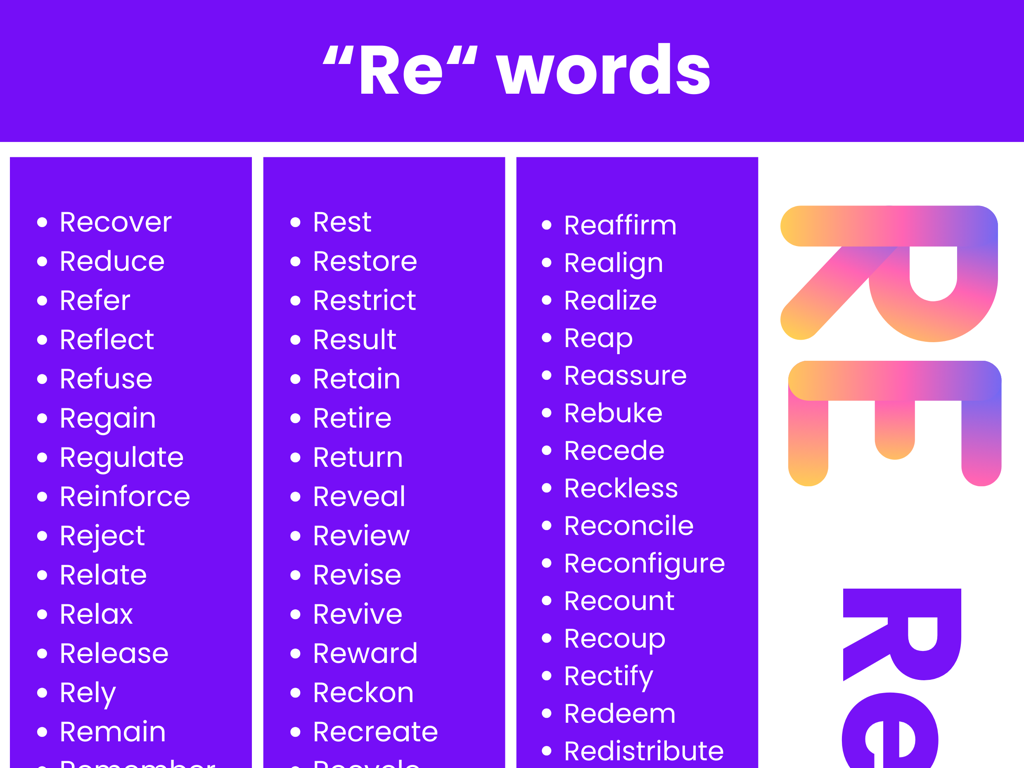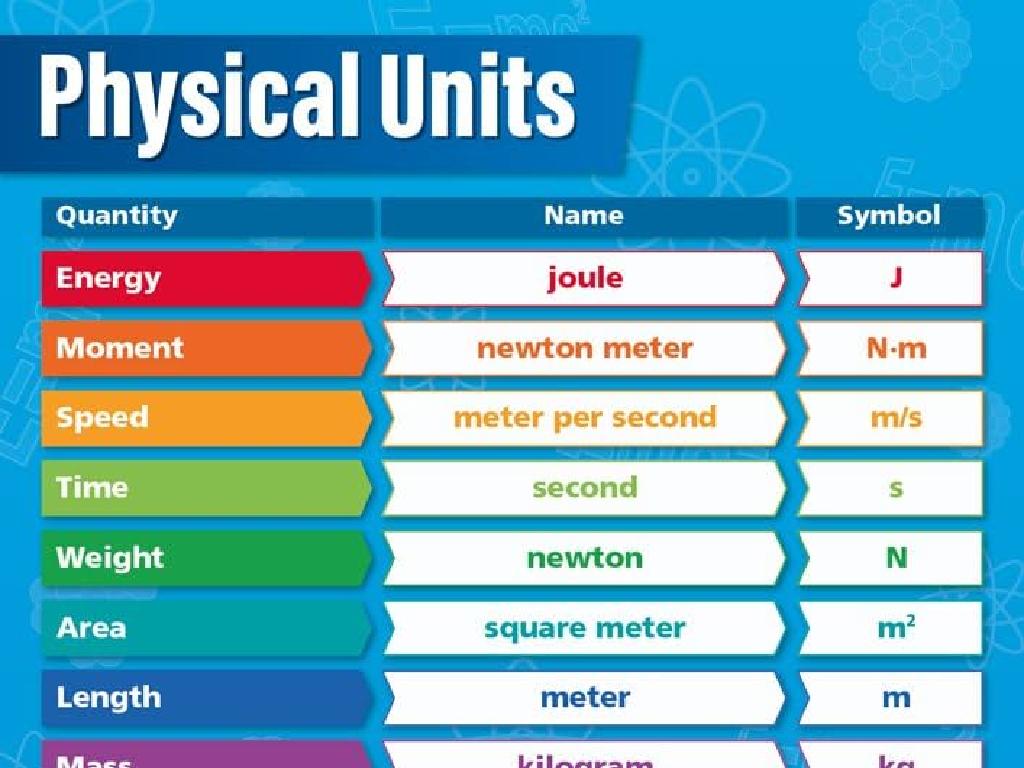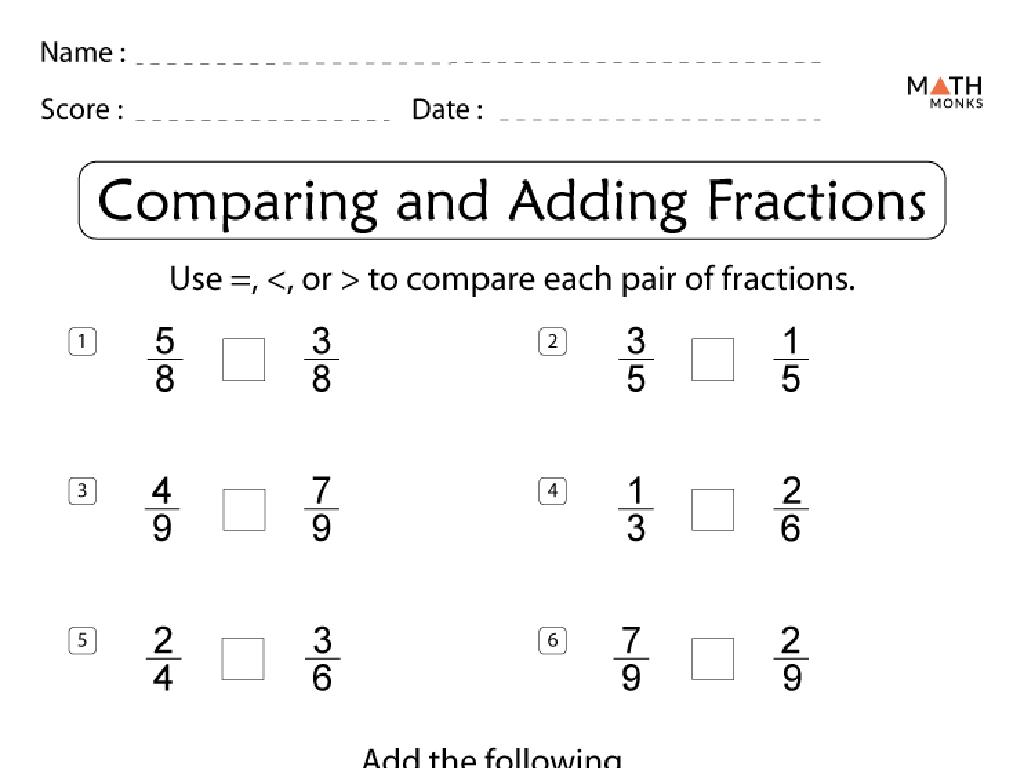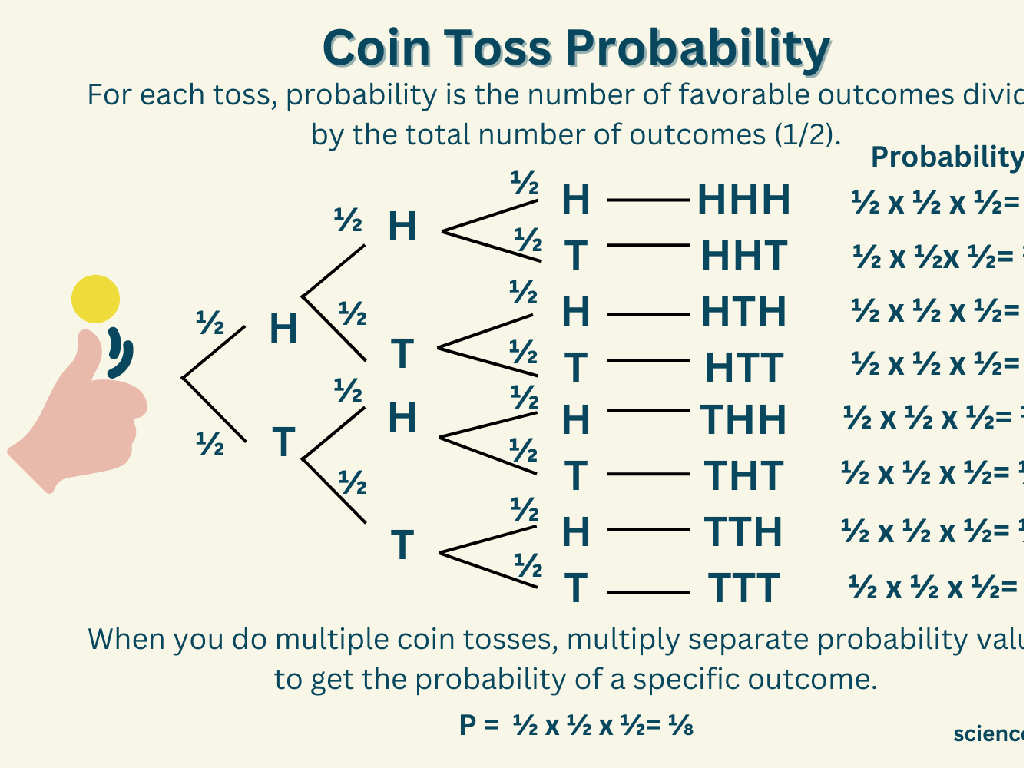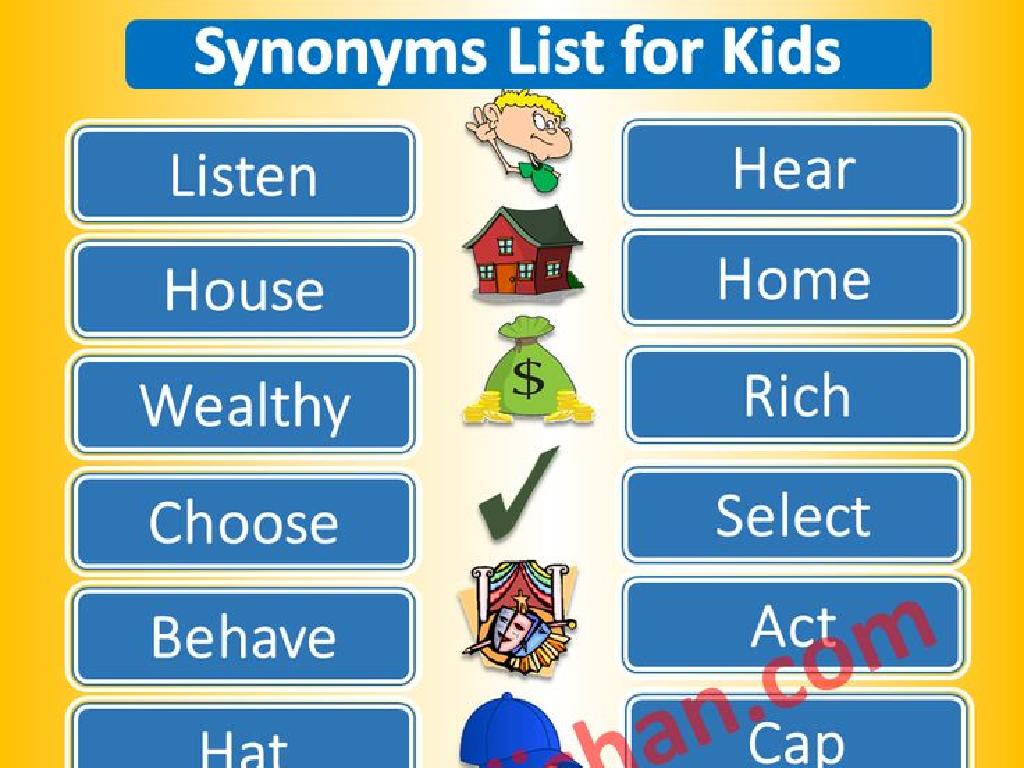Compare Two Numbers - Up To 5
Subject: Math
Grade: Kindergarten
Topic: Comparing Up To 5
Please LOG IN to download the presentation. Access is available to registered users only.
View More Content
Comparing Numbers Up to 5
– Learning big and small numbers
– What numbers are bigger or smaller than others?
– Counting numbers 1 through 5
– Let’s count: 1, 2, 3, 4, 5!
– Playing number comparison games
– Use toys to compare which group has more
– Understanding ‘more’ and ‘less’
– ‘More’ means a bigger number, ‘less’ means a smaller number
|
This slide introduces the concept of comparing numbers to Kindergarten students. Start by explaining the idea of ‘big’ and ‘small’ with simple examples, like comparing the size of two toys. Then, engage the students in counting together from 1 to 5 to ensure they are familiar with the numbers they will be comparing. Introduce fun, interactive games where students can physically compare groups of objects to determine which has ‘more’ or ‘less’, reinforcing the concept of number comparison. Use clear and simple language to explain that ‘more’ indicates a larger quantity, while ‘less’ signifies a smaller one. Encourage participation and praise efforts to build confidence.
Learning to Compare Numbers
– ‘Compare’ means finding differences or similarities
– Compare numbers to see more or less
– Which number is bigger: 2 or 4?
– Use signs like >, means greater, 2? Is 1 < 5?
|
This slide introduces the concept of comparison in mathematics to Kindergarten students. Start by explaining that comparing is like playing ‘spot the difference’ with numbers, helping them understand that they can find out which number is bigger, smaller, or if they are the same. Introduce the comparison signs (> for greater than, < for less than, = for equal to) and use relatable examples with numbers up to 5. Encourage the students to use their fingers to represent the numbers and compare them visually. This will help them grasp the concept of comparison in a tangible way. Prepare to guide them through several examples and ensure they understand the meaning of each sign before moving on to practice exercises.
Meet the Comparison Friends
– ‘Greater Than’ Gator
– This gator prefers the larger number between two.
– ‘Less Than’ Ladybug
– Ladybug always picks the lesser of two numbers.
– ‘Equal To’ Eggs
– These eggs represent numbers that are exactly alike.
– Practice comparing numbers
|
Introduce the concept of comparing numbers to the students using friendly characters. Explain that the ‘Greater Than’ Gator is a character that always wants to eat the bigger number, so its open mouth faces the larger number (e.g., 4 > 3). The ‘Less Than’ Ladybug is the opposite, always going towards the smaller number (e.g., 2 < 3). The 'Equal To' Eggs are a pair of twins that look exactly the same, symbolizing equality (e.g., 5 = 5). Use visual aids like drawings or toys to represent these characters and help students visualize the concept. For practice, provide sets of numbers up to 5 and ask the students to use the characters to compare them. This will help solidify their understanding of the comparison concept.
Let’s Compare Numbers!
– Gator wins with more numbers
– If 4 > 2, Gator wins because 4 is more
– Ladybug wins with fewer numbers
– If 1 , <, =
|
This slide introduces the concept of comparing numbers using characters kids can relate to: Gator, Ladybug, and Eggs. Explain that the ‘greater than’ sign (>) means one number is bigger, like how Gator is bigger when he wins. The ‘less than’ sign (<) shows one number is smaller, just like Ladybug is smaller when she wins. When numbers are the same, it's a tie, and the Eggs win, represented by the 'equal to' sign (=). Use visual aids like toys or drawings to demonstrate this concept. Prepare to have the students practice with real examples and ensure they understand by asking them to explain why each character wins.
Comparing Numbers: Which is More or Less?
– Compare 3 and 5: Which is more?
– 5 is more than 3 because when we count to 5, 3 comes first.
– Compare 2 and 2: Are they the same?
– 2 is the same as 2. They are equal!
– Compare 4 and 1: Which is less?
– 1 is less than 4 because 1 is where we start counting from.
|
This slide is designed to help Kindergarten students understand the concept of comparing numbers up to 5. Start by explaining that comparing numbers means looking at two numbers to see which one is bigger, smaller, or if they are the same. Use visual aids like counting blocks or fingers to demonstrate the concept. For example, show 3 fingers on one hand and 5 on the other, and count together to see which is more. Emphasize that the number which comes later when we count is the bigger number. For the same numbers, show that they have the same count of items or fingers. Encourage students to practice with different numbers and use terms like ‘more than’, ‘less than’, and ‘equal to’ to describe their comparisons.
Your Turn to Compare Numbers!
– Be the judge of numbers
– Who wins? You decide!
– Use special signs for answers
– , or = to compare numbers
– Have fun comparing!
|
This slide is an interactive activity for the students to practice comparing numbers up to 5. Encourage the children to think of the numbers as competitors in a game where they have to decide which one is greater, lesser, or if they are equal. Introduce or review the symbols for less than (), and equal to (=). Provide a set of number pairs for the students to compare and ask them to use the correct symbol to show their answers. For example, present the numbers 2 and 4, and guide the students to decide if 2 4, or 2 = 4. Prepare several examples and ensure that each child has a chance to participate. The goal is to make the activity engaging and to reinforce the concept of number comparison in a playful manner.
Class Activity: Number Match-Up
– Play a game with comparison signs
– Pair up with a classmate
– Find the right answers together
– Who can match all correctly?
|
This interactive class activity is designed to help Kindergarten students understand the concept of comparing numbers up to 5. Students will be paired up to encourage teamwork and communication. Provide each pair with a set of number cards and comparison signs (less than, greater than, and equal to). The goal is for them to determine the correct comparison sign that goes between two numbers. For example, placing the ‘greater than’ sign between 4 and 2 to show that 4 is greater than 2. Monitor the pairs to ensure they are collaborating effectively and understanding the concept. Offer guidance and praise as they work through the activity. Possible variations of the activity could include using objects instead of number cards for a more tactile experience, or turning it into a timed challenge for a bit of competitive fun.
Congratulations, Math Detectives!
– Celebrate learning number comparison
– Recognize your new Math Detective skills
– You can now spot which number is greater or if they are equal
– Understand bigger, smaller, and same
– Applaud for your hard work
– Let’s clap for each other and celebrate our success!
|
This slide marks the conclusion of the lesson on comparing numbers up to 5. It’s a celebration of the students’ achievements and an affirmation of their new skills as ‘Math Detectives’. Reinforce the concepts of identifying which numbers are bigger, smaller, or the same. Encourage the children to give themselves and their classmates a big round of applause for their hard work. This positive reinforcement helps build their confidence and excitement about learning math. You can also suggest that they show their families their new skills at home, further reinforcing the day’s lesson.

